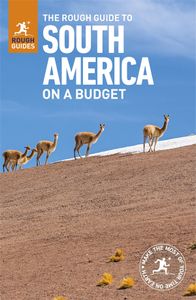Moving on from Machala
With no central bus station, Machala’s various bus companies operate out of their own mini-terminals, most of which are clustered together a few blocks east of the parque central. Key destinations include: Huaquillas, on the Peruvian border (serviced by CIFA, Guayas and Bolívar, and Ecuatoriano Pullman, Colón and 25 de Junio); Piura, in Peru (CIFA); Guayaquil (frequent service with Ecuatoriano Pullman, as above, and various others); Cuenca (Transportes Azuay, Sucre and Junín); Loja (Transportes Loja, Tarqui and Bolívar; those going via the village of Alamor can drop you at Puyango for the petrified forest) and Quito (Panamericana, Colón and Bolívar, and Occidental, Buenavista and Olmedo). For the gold-mining village of Zaruma, take an hourly bus with Cooperativas TAC, on Colón between avenidas Rocafuerte and Bolívar, or with Transportes Piñas, on Colón and Avenida 25 de Junio
Reserva Ecológica Manglares Churute
About 45km southeast of Guayaquil on the road to Machala is the prominent visitor centre of the Reserva Ecológica Manglares Churute, which protects 350 square kilometres of mangrove swamps. They’re best viewed on a boat ride through the labyrinthine estuaries and channels that thread through the mangroves, whose dense tangle of interlocking branches looms out of the water. Originally covering a much larger coastal area (many were cleared to make way for shrimp farms), the mangroves are part of a unique ecosystem providing a habitat for many different fish and crustaceans and more than 260 bird species, including the purple gallinule, muscovy duck, pinnated bittern, glossy ibis, roseate spoonbill and horned screamer, now only found here in western Ecuador. Occasional sightings have been made of Chilean flamingos (Jan–Feb), and bottlenose dolphins (June–Nov) are frequently seen frolicking around the boats.
From the visitor centre, a rudimentary path (1hr) leads inland for a walk along the slopes of Cerro El Mate, a low hill with a lookout point, to Laguna El Canclón, a wide, grey lake encircled by low-lying hills and rich in birdlife. Another path, Sendero La Cascada (2hr), takes you through dense, dry forest by some enormous royal palms and up the slopes of a hill covered in lush vegetation. Snakes, guantas and howler monkeys – which you’re more likely to spot if with a guide – inhabit the dry and humid forests. The path is at the end of a track branching west from the coastal highway, 5km north of the visitor centre; guides can take you there in a jeep.
Zaruma and around
Off the tourist trail and about 86km inland from Machala sits ZARUMA, one of the prettiest little towns in Ecuador. It has the country’s finest collection of early twentieth-century timber buildings and is a charming place to wander around; steep, narrow streets are lined with brightly painted wooden houses and a gorgeous timber church, built in 1912, overlooks the central square.
Conquistadors first established a settlement here in 1549 to exploit the area’s large gold deposits, and their mines flourished until the eighteenth century when they closed down because the seams were thought to be exhausted. Yet almost a century later, a Quito geologist analysing local rocks discovered a high gold content, sparking another gold-mining boom in 1880. Mining continues but on a much smaller scale, as the gold deposits are running out.
You’ll find assorted mining paraphernalia at the captivating Museo Municipal, just off the main square, opposite the church, along with curiosities, including whale vertebrae, antique sewing machines, irons, phones and gramophones. You can also visit a disused mine, the Mina de Sexmo (Tues–Sat; free) on the outskirts of town (down the hill from the Hotel Cerro de Oro, then first right), where you don protective boots and hat and are guided round the tunnels.
Rounding out Zaruma’s attractions are the Museo Indígena Selva on Honorato Márquez beyond the bus depots, with its unsettling collection of insects, stuffed animals and desiccated snakes, and the public swimming pool set in a fantastic hilltop location above the town – a lovely place to head on a warm, sunny day.
The nearby towns of Piñas, 13km west, and Portovelo, a few kilometres south of Zaruma (both easily reached by bus from Zaruma), retain less of their historic mining character, though each has a good museum. In Piñas, the Museo Mineralógico Magner Turner, in the Barrio Campamento Americano (daily; $1; t 07/2949345), is one of the best mining museums in the country, and includes a large bunker, 150m of mineshafts and various mineral and gem exhibits. In Portovelo, the Museo Rubén Torres displays a modest array of antiques and pre-Columbian artefacts.
Also in the region are several reserves managed by the Fundación Jocotoco, protecting vital forest habitat harbouring some 630 types of birds, many of which are restricted-range endemic species. The closest to Zaruma is Buenaventura, a 2,649 hectares reserve beyond Piñas on the road to Machala, which features a 6km forest trail and a small lodge for visitors. Contact Lorena Córdova for more information (info@jocotoco.org / operaciones@jocotoursecuador.com).




















